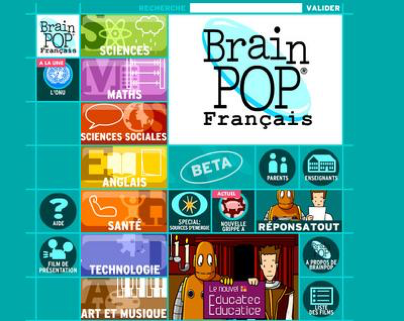2/15/2017
Annette Sojic
Director of the French Language Program
Senior Professor of Practice
Department of French and Italian
Of all the French courses I have taught at Tulane, Teaching French, a dual-level pedagogy course, is the course which enables both instructor and students to make the most frequent, purposeful, and innovative use of technology.

Among the foremost characteristics of 21st-century instruction is the embrace of technology as part of the educational process. Training future teachers to integrate technology into the classroom successfully has become an essential component of pedagogy courses today. In Teaching French, the focus is on how technology enhances teaching skills while supporting the learning experience in a foreign language classroom. Throughout the semester, class discussions and activities are designed to highlight the positive impact of technology on both teaching and learning a foreign language.
I generally leave to students the task of demonstrating the effectiveness of technology. After they are introduced to course content with presentation software such as PowerPoint, Prezi, or Keynote, I ask students to reflect in groups on the ways these tools improve the teacher’s presentation skills. At the same time, I take advantage of presentation technology for assessment purposes. A fun, free, and easy-to-use device is an electronic student response system called Poll everywhere, which allows the instructor to interact with students while gauging their understanding of the material and their progress in the course. During activities focusing on language teaching, I ask students to evaluate various online resources, such as software which helps teachers design quizzes (IXL), educational games (Jeopardy), or collaborative reflection activities (Google Doc).
Students also take the learners’ perspective and practice with a range of tools, which stimulate oral and written production at all levels of thinking. This activity is followed by a class presentation. Resources for basic-level thinking are sites like Quizlet, BrainPop français, or FLE (for vocabulary and grammar review), Lingro (for reading, with word translations and definitions a click away), and iMovie (for subtitling).
Critical thinking is enhanced by brainstorming apps, such as Mindomo, which allow language learners to create graphic organizers and concept maps. Among students’ favorites are creative writing tools such as Voki or Goanimate (for cartoon animations), Pixton (for comic strips) or VoiceThread (for digital storytelling).
In this practicum course, the focus on technology is connected to the students’ own hands-on mentored teaching experience, during a required practical training period. At our partner schools, most classes are equipped with pedagogical tech tools (in French, “TICE”), including smart boards and powerful visual aids, such as the ELMO document camera, which projects and magnifies documents, objects, or handwriting. While smart boards also serve as visual aids, their greatest advantage is to allow instructors to integrate planned or unplanned interactive video materials into their lessons, a multimedia feature which appeals to learners while enhancing their critical thinking and problem-solving skills.
As technology keeps developing, the resources for teachers and learners are boundless. Our end-of-semester public exhibit highlights the students’ skillful and creative use of some of the latest educational tech tools.



